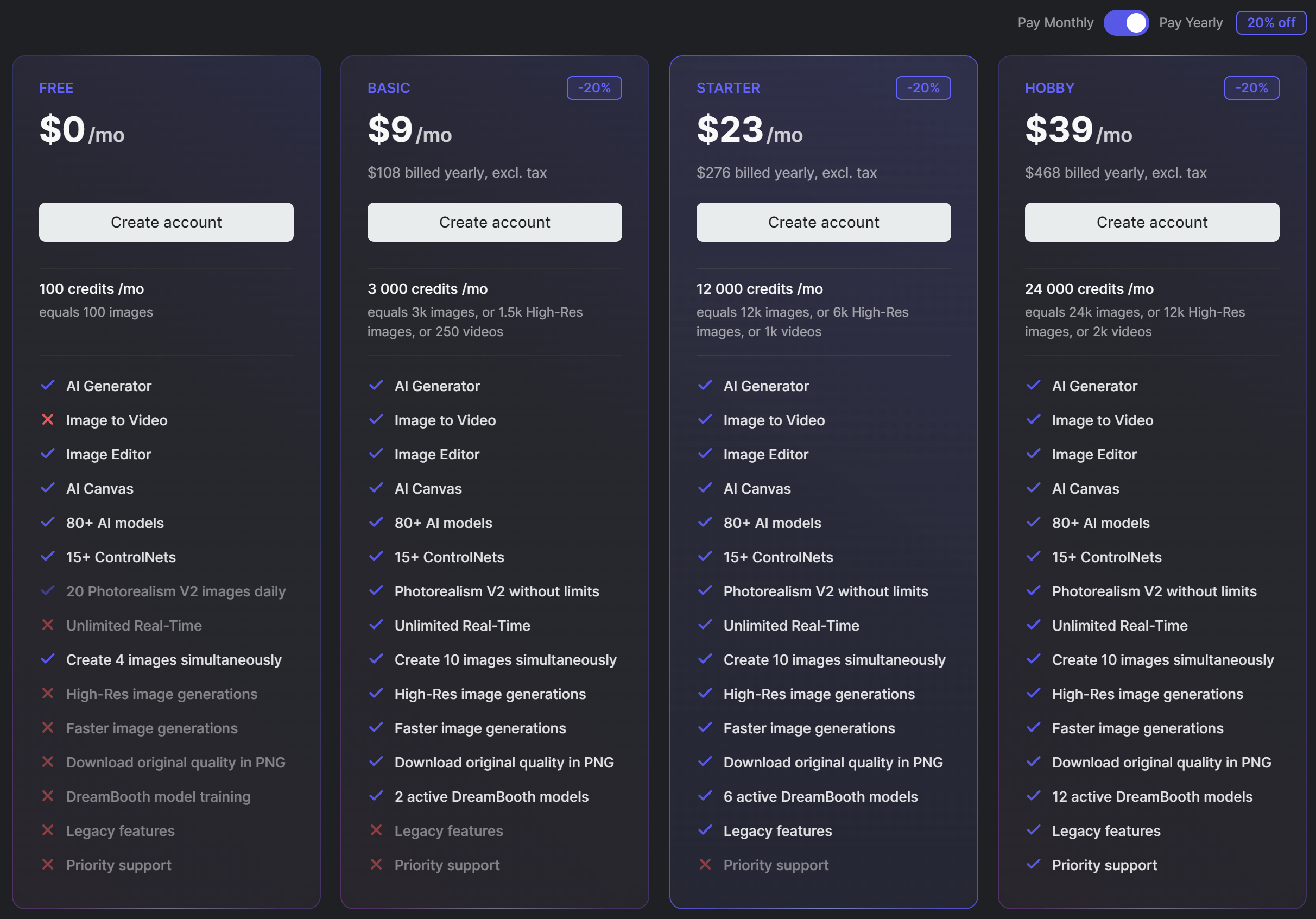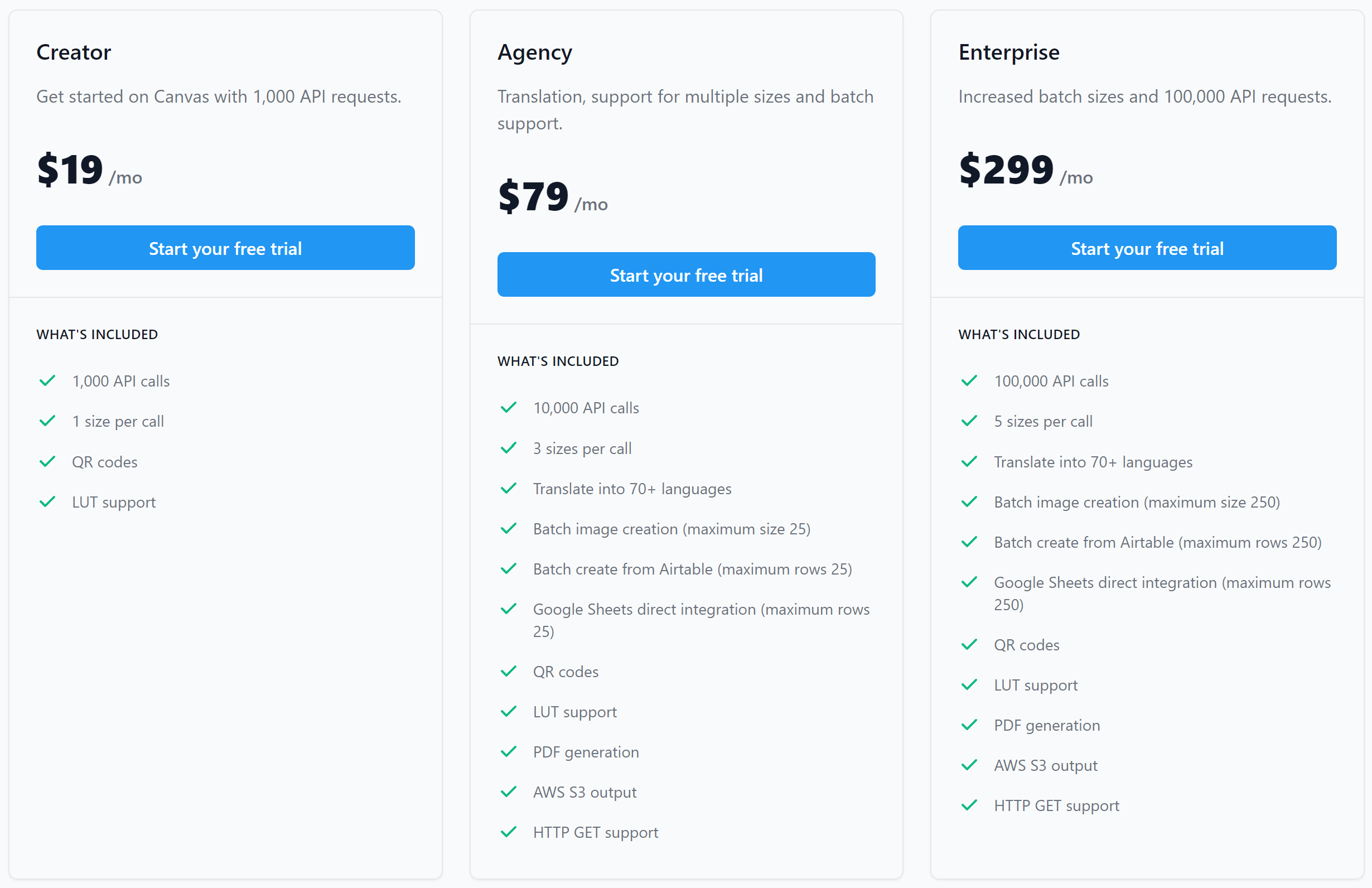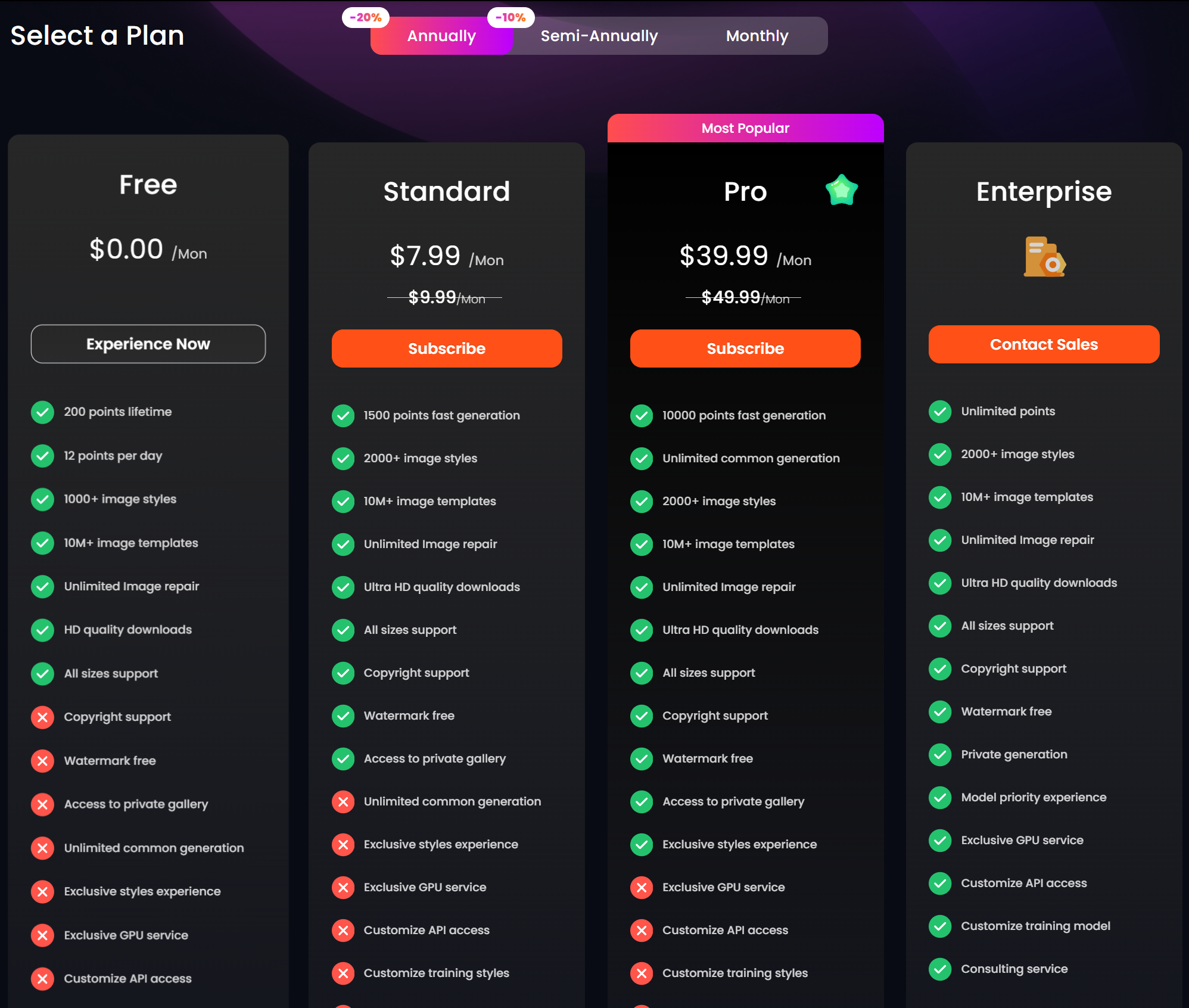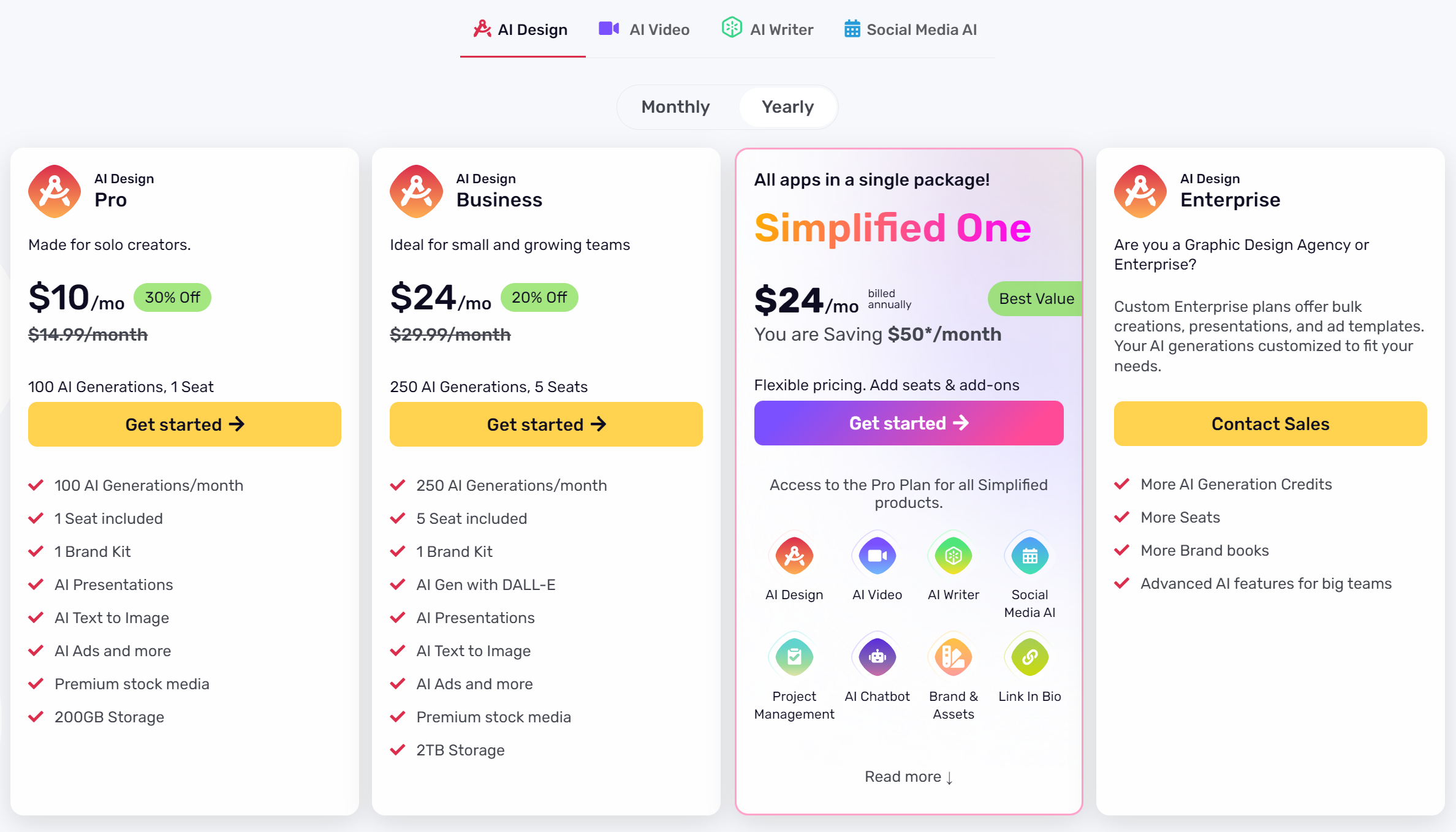Best AI Art Generators
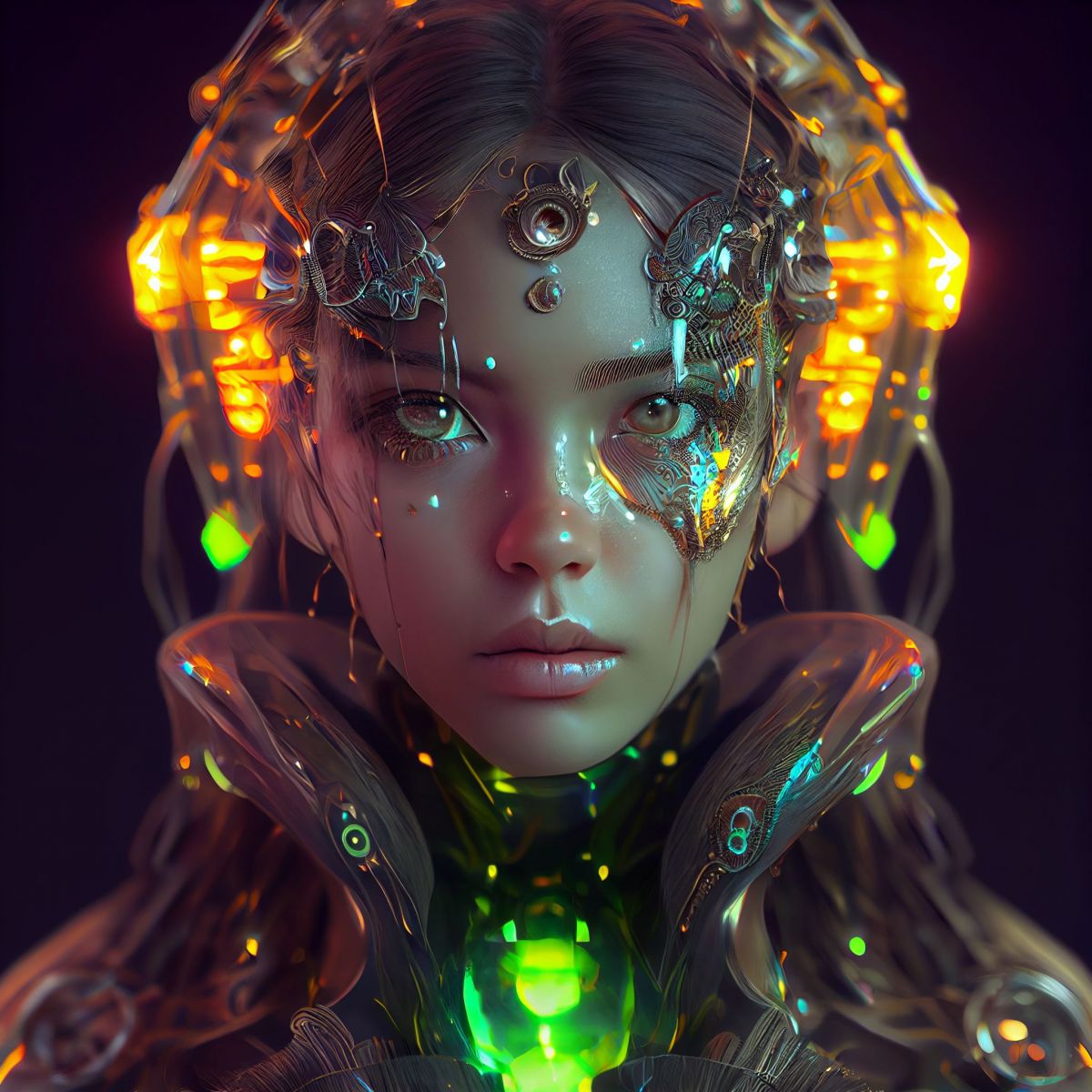
Art has always been a powerful medium of human expression, but with the advancement of artificial intelligence (AI), a new era of creativity has unfolded. AI art generators, leveraging the capabilities of machine learning algorithms, have revolutionized the creative industry. This article will explore the world of AI art generators, their benefits, and how to choose the best one for your artistic needs.
Introduction
AI art generators, AI art tools, or AI-powered creative platforms are software applications that utilize machine learning algorithms to generate unique and original artwork. These tools assist artists, designers, and enthusiasts in their creative endeavors by providing various styles, techniques, and visual inspiration.
How AI Art Generators Work
At the core of AI art generation lies the power of machine learning algorithms. These algorithms are trained using vast amounts of data, such as paintings, photographs, or sketches, to learn patterns, styles, and structures. Through a process known as deep learning, neural networks within the AI art generator can analyze and understand the underlying elements of artistic creations.
The user typically provides an input image or selects predefined styles or parameters to generate AI art. The AI art generator then employs trained neural networks to interpret the input and create a unique artistic output. This process combines the patterns and features learned from the training data with the user's information to produce visually stunning and original artwork.
Benefits of AI Art Generators
The rise of AI art generators has brought numerous benefits for artists and enthusiasts alike. Firstly, these tools act as a wellspring of creativity, inspiring artists with new ideas, styles, and perspectives. By exploring different AI-generated art pieces, artists can tap into a world of possibilities and discover uncharted artistic territories.
Moreover, AI art generators can be a tremendous time-saver. Creating artwork from scratch can be a laborious and time-consuming process. With AI art generators, artists can quickly generate artwork in various styles, bypassing the need for extensive manual work. This allows artists to allocate more time to conceptualizing, refining, and experimenting with their artistic vision.
Another advantage is the ability to explore new styles and techniques. AI art generators often offer diverse artistic styles, from classical to abstract, allowing artists to experiment and push the boundaries of their creativity. This will enable artists to expand their skill sets and venture into unexplored artistic domains.
Best AI Art Generators - Table of Contents
| # | Name | Tools Images | Best for | Rating | Pricing |
|---|---|---|---|---|---|
| 1 | Leonardo AI |  | Artists and Designers | 4.9 | 0-48$ |
| 2 |  | Digital artists and developers | 4.8 | 0-49$ /mo | |
| 3 | Simplified |  | Content creators | 4.7 | 12$-29$ /mo |
| 4 | WriteSonic |  | Writers and marketers | 4.5 | 0-79# /mo |
| 5 | 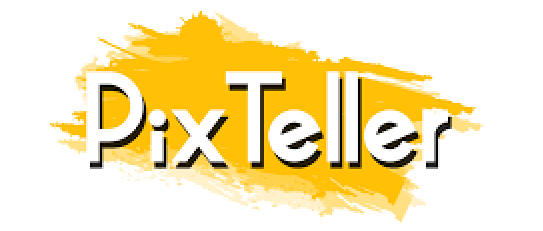 | Individuals and small business | 4.3 | 7$-19$ /mo | |
| 6 | AdCreative.AI |  | Marketers and businesses | 4.2 | 0-549$ /mo |
| 7 | MAZE.GURU |  | Artists | 4.2 | 0-49$ |
| 8 | Deep Dream Generator |  | Enthusiasts and artists | 4.1 | Free |
| 9 |  | AI artists and art buyers | 4.0 | 8$-800$ |
Best AI Art Generators - In-Depth Reviews
Best AI Art Generator: Leonardo AI
Introduction
In the ever-evolving world of digital art, Leonardo.AI stands out as a powerful tool that leverages artificial intelligence to create stunning and unique artworks. This AI art generator is designed to cater to both novice and professional artists, offering a range of features that simplify the art creation process while delivering high-quality results. Whether you're looking to create commercial-grade images or just explore your creative side, Leonardo.AI provides the tools you need.
Features
- AI-Powered Image Generation: Leonardo.AI uses advanced AI algorithms to generate images from text descriptions. This feature allows users to create intricate and detailed artwork without any prior artistic experience.
- Object and Background Removal: The tool includes functionalities for automatic object and background removal, making it easier to edit and enhance images.
- Color Enhancement: Users can improve the visual appeal of their images with built-in color enhancement tools, ensuring vibrant and professional-quality results.
- Commercial Use Rights: Even with the free version, users can utilize the generated images for commercial purposes, making it an attractive option for businesses and creators.
- User-Friendly Interface: The platform is designed to be intuitive and easy to navigate, accommodating users of all skill levels.
Pros
- High-Quality Output: The AI algorithms used by Leonardo.AI ensure that the generated images are of high quality and suitable for a variety of uses, including commercial applications.
- Ease of Use: The user-friendly interface makes it accessible to everyone, from beginners to experienced artists.
- Versatile Tools: Features like object and background removal, and color enhancement, provide users with a comprehensive suite of tools for image editing.
- Commercial Rights: The ability to use images commercially, even with the free version, adds significant value for users looking to monetize their creations.
Cons
- Learning Curve: While the interface is user-friendly, new users may still require some time to familiarize themselves with all the features.
- Subscription Costs: Access to advanced features and higher resolution outputs may require a subscription, which could be a drawback for those on a tight budget.
- AI Limitations: As with any AI tool, there may be limitations in creativity and precision compared to human artists.
Summary
Leonardo.AI is a powerful and versatile AI art generator that offers a range of features to help users create stunning and professional-quality artwork. Its user-friendly interface, high-quality output, and commercial use rights make it an attractive option for both hobbyists and professionals. However, users should be prepared for a slight learning curve and potential subscription costs for advanced features. Overall, Leonardo.AI is a valuable tool for anyone looking to explore the possibilities of AI in digital art creation.
GETIMG.AI

Introduction
Getimg.ai is a comprehensive AI creative toolkit designed to transform textual descriptions into vivid images, animate photos, and customize AI models. This platform caters to both casual users and professionals by providing tools that make digital creativity accessible and efficient.
Main Features
- AI Generator:
Converts text into images, allowing users to describe any scene or concept and have it visualized in seconds. - Image to Video:
Transforms static images into dynamic 4-second video clips, adding motion to still photos. - AI Canvas:
Offers an infinite canvas for outpainting, enabling the expansion of images beyond their original borders. - Real-Time Image Generation:
Provides instant visual feedback as users type their prompts, with options to switch between photorealism, art, and anime styles. - DreamBooth:
Allows the creation of customized AI models with just a few user-provided images. - ControlNet:
Guides AI to generate images based on user-supplied source images for more personalized results. - API:
Offers developers an easy-to-use REST API to integrate Getimg.ai’s capabilities into other applications.
Pros
- Versatility:
Supports a wide range of creative tasks from basic image editing to complex model training. - Ease of Use:
User-friendly interfaces and intuitive tools make it accessible to users with various skill levels. - Community and Support:
Large community of users and comprehensive documentation aid in troubleshooting and creative exploration.
Cons
- Resource Intensity:
High-quality image generation and custom model training may require significant computational resources. - Learning Curve:
While user-friendly, mastering the full range of tools and their applications can be challenging for beginners.
Personal Experience
Likes:
- The ability to instantly generate images from text is incredibly powerful and stimulates creativity without the need for advanced design skills.
- The integration capabilities via the API are particularly useful for embedding AI image generation into custom workflows.
Dislikes:
- Some advanced features, like custom model training, were intimidating and require a steeper learning curve to fully utilize.
- Dependence on a stable internet connection for accessing cloud-based tools can sometimes hinder performance and availability.
Pricing
Conclusion
Getimg.ai is an impressive platform that leverages artificial intelligence to democratize image creation, offering tools that cater to a wide range of creative needs. From generating images from text to creating personalized AI models, it provides a suite of tools that are both innovative and functional. While there are challenges in terms of complexity and resource requirements, the benefits of enhanced creative freedom and efficiency make Getimg.ai a valuable resource for digital artists, marketers, and developers looking to harness the power of AI in image creation.
2. SWITCHBOARD
Introduction
Switchboard Canvas emerges as a cutting-edge tool in the realm of automated image production. Designed to simplify and enhance the efficiency of creating digital images, Switchboard Canvas integrates seamlessly with APIs and no-code tools like Zapier, making it highly accessible for both developers and non-technical users alike.
Main Features
- Template Designer: An intuitive, web-based interface allows users to design and preview responsive templates, ensuring pixel-perfect outputs.
- Automation Capabilities: Users can automate image production using the API or connect with services like Zapier for streamlined workflows.
- Multiple Image Generation: The platform supports the creation of multiple assets in a single API call by specifying different dimensions.
- Language Translation: Text elements can be translated into over 70 languages in a single API operation, enhancing the tool's versatility in global applications.
- Integration with Canva: Users can import design elements from Canva, leveraging existing assets for new creations.
Pros
- Generous Free Trial: Switchboard offers a 14-day free trial without requiring credit card information, allowing users to explore its full capabilities.
- Easy Integration: The tool's compatibility with popular platforms like Airtable and Canva facilitates a seamless integration into existing digital workflows.
- Responsive Design Features: The template designer is fully responsive, enabling users to create designs that adapt to various resolutions.
Cons
- Complexity for Beginners: While powerful, the range of features and integration options might be overwhelming for users without prior experience in image automation or design.
- Dependence on External Platforms: The tool’s performance and capabilities might be limited by its dependencies on external platforms like Canva and Zapier for some functionalities.
Personal Experience
Likes:
- I appreciate the intuitive nature of the Template Designer, which allows for quick learning and easy use, even for those with minimal design experience.
- The ability to automate repetitive tasks and integrate with existing tools like Canva and Airtable significantly enhances productivity.
Dislikes
- The initial setup and learning curve can be steep for users unfamiliar with automation tools or those new to graphic design.
- Some users might find the reliance on external services for some features (like Canva for design elements) a bit restrictive.
Pricing
Conclusion
Switchboard Canvas is an innovative solution for anyone looking to automate and streamline their image production processes. With its robust template designer, powerful API, and broad integration capabilities, it offers significant advantages for increasing efficiency in content production. While it poses some challenges for beginners, its benefits in saving time and improving output quality make it a valuable tool in the digital marketing and design toolkit. As the platform continues to evolve, it is likely to expand its features and ease of use, making it even more accessible to a broader audience.
3. MAZE.GURU
Introduction
Maze Guru is an innovative platform leveraging advanced AI technology to help users create stunning visual art. It merges various AI models to offer diverse art creation capabilities, from static images to animated scenes, catering to artists, designers, and anyone interested in exploring AI-driven artistry.
Main Features
- Multiple AI Models: Includes models like SD XL for applied arts, Anime for Japanese-style art, and others like Midjourney v5&v6, enhancing a broad spectrum of creative possibilities.
- Character Square: Choose different characters or themes to begin creating artworks tailored to specific styles or inspirations.
- Optimize Prompts with LLM: Utilizes Language Learning Models to refine user inputs into more detailed, artistic prompts that better guide the AI.
- Seamless Integration: The platform can produce not only images but also essays, videos, and more, all through a single interface.
- Community and Collaboration: Users can explore community creations for inspiration and participate in theme contests like "MechArt" to showcase their work.
Pros
- Creative Flexibility: Offers a wide range of artistic styles and customization options, making it versatile for various types of art creation.
- Ease of Use: The AI-assisted creation tools are user-friendly, allowing even beginners to generate professional-level art.
- Community Features: The platform encourages community interaction and learning, which enhances user experience and engagement.
Cons
- Complexity of Features: While versatile, the numerous options and features can be overwhelming for new users unfamiliar with AI-driven art tools.
- Dependency on AI Accuracy: The quality of output heavily depends on the input prompts and the AI’s interpretation, which might not always align with the user’s vision.
Personal Experience
Likes
- The ability to transform simple descriptions into complex art pieces using advanced AI is highly impressive.
- The community aspect, including contests and feedback, fosters a collaborative and supportive environment for creators.
Dislikes
- Navigating through the extensive features and models can be daunting initially.
- Sometimes, the AI-generated art may require several iterations to meet the desired artistic vision, which can be time-consuming.
Pricing
Conclusion
Maze Guru is a platform that combines art and technology, offering tools that push the boundaries of traditional and digital art forms. It stands out for its integration of multiple AI models and its community-driven approach, which not only fosters creativity but also collaboration among its users. While it comes with challenges typical of AI-dependent platforms, its benefits in democratizing art creation and offering endless creative possibilities make it a valuable resource for artists and creators around the globe.
4. Simplified

Introduction
The Simplified AI Art Generator is a cutting-edge tool designed to create high-quality artwork from textual descriptions. Utilizing advanced AI models such as DALL-E and Stable Diffusion, this generator transforms your text prompts into visually appealing images suitable for various applications.
Main Features
- Text-to-Image Generation: Converts text descriptions into images, allowing users to create unique art without needing advanced design skills.
- Multiple Formats: Download images in PNG, JPG, SVG, or PDF formats, ensuring versatility for different uses.
- Editing Tools: Includes basic editing options like background removal, adding icons, and stickers to enhance your images
- Collaboration: Supports team collaboration with features such as real-time comments and the ability to share projects with guests for feedback.
Pros
- Ease of Use: User-friendly interface that simplifies the process of creating and editing images.
- Versatility: Suitable for a wide range of applications, from social media posts to marketing materials.
- Collaboration Tools: Facilitates teamwork and feedback, making it ideal for remote teams.
- Multiple AI Models: Offers different styles and capabilities through DALL-E and Stable Diffusion, catering to various creative needs.
Cons
- Limited Advanced Editing: While it includes basic editing tools, it may not be sufficient for more complex design tasks.
- Dependence on Text Prompts: The quality of generated images heavily depends on the clarity and specificity of the text prompts provided.
- Subscription Costs: Some advanced features and unlimited use may require a paid subscription
Personal Experience
Likes:
- The ability to generate high-quality images quickly and effortlessly.
- The collaboration features that allow for easy sharing and feedback.
- The variety of formats available for downloading images.
Dislikes:
- The need for very specific text prompts to achieve desired results.
- The potential costs associated with accessing advanced features.
Pricing
Conclusion
The Simplified AI Art Generator is a powerful tool for anyone looking to create unique and visually appealing artwork with ease. Its user-friendly interface, versatile application, and robust collaboration tools make it an excellent choice for both personal and professional projects. While it may have some limitations in advanced editing and dependence on detailed prompts, its strengths in generating high-quality images and supporting teamwork outweigh these drawbacks.
5. pixteller
Introduction
PixTeller is a dynamic online tool designed for creating a wide variety of visual content such as images, animations, and videos. It simplifies the design process with an easy-to-use interface that caters to both professionals and novices alike. By providing access to numerous templates and powerful editing tools, PixTeller helps users bring their ideas to life through stunning visuals.
Main Features
- Versatile Creation Tools: Users can create posters, logos, social media images, animated logos, GIFs, video thumbnails, invitations, flyers, and more.
- Rich Template Library: Offers over 100,000 design templates which can be customized to suit individual preferences.
- Animation Maker: Includes an animation editor tool for creating animated videos and GIFs, enhancing content engagement.
- Extensive Asset Collection: Provides access to over 1.5 million photos, 100,000 shapes, and a variety of gradient colors.
- User-Friendly Interface: Features like the animation timeline, clipping crop, and smart resize make the platform accessible to users with no prior design experience.
Pros
- Ease of Use:
The platform is designed to be intuitive, making it easy for users to start creating without a steep learning curve. - Comprehensive Resources:
The vast array of templates, photos, and animations offer endless creative possibilities. - Flexibility:
Suitable for creating both static and animated content, which is ideal for varied marketing and personal needs.
Cons
- Feature Overload: The extensive features and options might overwhelm new users initially.
- Dependence on Internet Connection: Being an online tool, it requires a stable internet connection to function, which might be a limitation for some users.
Personal Experience
Likes
- The simplicity of transforming template designs into personalized projects saves time and enhances productivity.
- The animation maker tool is particularly impressive, providing capabilities typically found in more complex software.
Dislikes
- Navigating through the massive library of assets and templates can sometimes be cumbersome, especially for those looking for something very specific.
- The online-only nature means you can't work offline, which could be restrictive in situations without internet access.
Conclusion
PixTeller stands out as a comprehensive and user-friendly platform for graphic design and animation creation. It democratizes design by making professional-level tools accessible to a broader audience, including those without formal design training. Whether you're looking to create engaging content for social media, marketing materials, or personal projects, PixTeller provides all the necessary tools in one platform. Despite the minor drawbacks related to its online nature and the potential information overload, PixTeller remains a great option for creating high-quality visual content easily and efficiently.
6. AdCreative.AI
7. deepdreamgenerator
Introduction
Deep Dream Generator (DDG) is a cutting-edge platform that blends creativity with the latest AI technology to produce stunning visual artworks. Designed for both seasoned artists and newcomers to the digital art scene, DDG allows users to create detailed, high-quality images and videos using advanced AI-driven tools.
Main Features
- Extensive Art Creation Tools: DDG offers tools for photo enhancement, AI art generation, and a groundbreaking video generation feature, all powered by sophisticated AI algorithms.
- Community Engagement: Features like direct messaging, shared prompts, and a vibrant user community foster a collaborative and inspiring environment.
- Advanced Prompt Techniques: Users can delve into intermediate and advanced techniques to refine their art creation process, enhancing the artistic output.
- Diverse Style Range: From photorealism to expressive artistic styles, DDG caters to a wide spectrum of visual preferences, allowing users to explore various artistic expressions.
- Continuous Updates and Innovation: Regular updates ensure that the platform stays at the forefront of AI technology, continuously introducing new features and improvements.
Pros
- High-Quality Outputs: The platform is renowned for its ability to generate images that can rival those created by human artists, thanks to its advanced AI models.
- User-Friendly Interface: Despite the complexity of its backend technology, DDG offers an accessible user interface that is welcoming for both experts and novices.
- Innovative Features: The introduction of video and animation generation from text prompts is particularly notable for expanding the creative possibilities available to users.
Cons
- Learning Curve: New users may need some time to familiarize themselves with the platform’s capabilities and how to best utilize the tools for optimal results.
- Dependency on AI Interpretation: As with any AI-driven tool, the output heavily depends on the input prompts, which might require tweaking to achieve the desired results.
Personal Experience
Likes:
- The transformative capability of turning simple images into complex artworks is impressive and provides a playground for creativity.
- The community aspect is enriching, allowing for sharing, learning, and growing with other artists, which enhances the overall experience.
Dislikes:
- Initial interactions with the platform can be overwhelming due to the rich feature set and advanced options available.
- The dependence on precise prompts might frustrate users new to AI art generation as they learn the ropes.
Conclusion
Deep Dream Generator stands out as a premier platform for anyone looking to explore or expand their capabilities in AI-generated art. It offers a comprehensive suite of tools that cater to a broad range of artistic needs, from amateur explorations to professional projects. The continuous evolution of the platform ensures that it remains innovative, keeping pace with the advancements in AI technology and expanding the creative boundaries for its users. Whether you are seeking to transform photos into intricate artworks or create unique visual narratives, DDG offers a powerful and inspiring environment to bring your visions to life.
8. ARTSI
Introduction
Artsi emerges as a pioneering platform in the realm of AI-created art, serving as a global marketplace that bridges AI artists and buyers. This online destination facilitates the direct sale and purchase of AI-generated artworks, ranging from digital downloads to unique commissioned pieces, thereby removing the traditional barriers posed by intermediaries.
Main Features
- Direct Artist-to-Buyer Sales: Artists retain control over their creations, selling directly to consumers worldwide without the need for middlemen.
- Diverse Art Categories: The platform features a wide array of art types, including limited editions, digital downloads, paintings, and more.
- Global Reach: Artsi connects creators and consumers from across the globe, making it a hub for international art transactions.
- Dynamic Pricing: Products are available at various price points, with frequent sales offering significant discounts, making art accessible to a broader audience.
Pros
- High Artist Commission: Artists earn a substantial 95% commission on every sale, incentivizing creative output and participation.
- Variety of Art Styles and Forms: The marketplace accommodates a diverse range of artistic expressions, from traditional to modern and abstract.
- User-Friendly Interface: The platform is easy to navigate, with clear categorization and search functionalities that enhance the shopping experience.
Cons
- Market Saturation: As the platform grows, the increasing number of artworks could overwhelm buyers and dilute individual visibility.
- Quality Variance: With the democratization of art sales, there may be significant variance in the quality of artworks available, which could affect buyer trust.
Personal Experience
Likes:
- The concept of empowering AI artists by providing them a vast platform without intermediaries is highly appealing.
- The user interface is straightforward, making it easy to browse through different categories and find artworks that suit one's taste.
Dislikes:
- Some of the art descriptions seem repetitive and could benefit from more detailed and varied narratives to better convey the uniqueness of each piece.
- The sheer volume of artwork could be overwhelming for some users, making it challenging to discover standout pieces without extensive browsing.
Conclusion
Artsi stands out as a visionary platform in the AI art space, effectively democratizing the process of buying and selling art. It provides a valuable service by enabling direct interaction between artists and buyers, fostering a vibrant community of creators. While the platform could improve in managing art quality and discovery, its commitment to high commissions and global accessibility positions it as a significant player in the art marketplace industry. As Artsi continues to evolve, it promises to refine its offerings and potentially set new standards for the digital art market.
Choosing the Best AI Art Generator
When selecting an AI art generator, it is crucial to consider several factors. Firstly, the user interface and user experience should be intuitive and user-friendly, enabling artists to navigate the platform effortlessly. A well-designed interface streamlines the creative process and enhances the overall user experience.
Pricing and subscription models also play a significant role. While some AI art generators offer free features or limited trials, others may require a subscription or one-time purchase. Artists should consider their budget and evaluate the value they receive from the platform, weighing the cost against the features and benefits provided.
Tips for Using AI Art Generators
To maximize the potential of AI art generators, artists can follow a few tips and best practices. Firstly, preparing and optimizing input images can significantly impact the quality of the AI-generated art. High-resolution photos with explicit subject matter and contrasting elements can enhance the final output.
Experimenting with different parameters and styles is also essential. AI art generators often provide various options for customization, allowing artists to tweak and fine-tune the output to their liking. Artists can achieve unique and personalized results by exploring different combinations and settings. Post-processing and refining AI-generated art can add a personal touch and elevate the artwork. Artists can apply manual adjustments, color corrections, or additional effects to bring out their artistic vision and make the painting their own.
Ethical Considerations in AI Art
The rise of the AI art generation has sparked several ethical considerations. One significant concern revolves around intellectual property and copyright. As AI art generators learn from existing artwork, there is a possibility of inadvertently producing works that resemble or infringe upon copyrighted material. Artists and platforms must navigate this landscape carefully, respecting copyright laws and ensuring proper attribution.
The question of authorship also arises when discussing AI-generated art. While AI art generators facilitate the creation process, the artistic vision and intent ultimately come from the user. Artists should consider how to credit their AI-generated artwork and clearly distinguish between their creative input and the contribution of the AI tool.
Furthermore, the emergence of AI art generators has raised debates about their impact on the art market and artists' livelihoods. Some argue that AI-generated art may devalue traditional art forms or diminish the market demand for human-created artwork. It is essential to assess the balance between AI-generated art and the preservation of human creativity and craftsmanship.
AI Art Generator Use Cases
The applications of AI-generated art extend beyond the realm of traditional artistry. Various industries have embraced AI art to enhance their products, services, and marketing efforts. For instance, AI art can create visually captivating and attention-grabbing content in the marketing and advertising industry, enabling brands to engage with their audience uniquely.
Interior design and fashion are other domains where AI-generated art can significantly impact. AI art generators allow designers to visualize and experiment with different aesthetics and styles, facilitating the creation of compelling and innovative designs. Additionally, AI-generated art can be incorporated into fashion pieces, creating one-of-a-kind garments and accessories that blend technology and creativity.
Future Developments in AI Art Generation
AI art generation continuously evolves, with advancements in machine learning algorithms and AI capabilities. As technology progresses, we can expect exciting developments in AI-generated art. Improved algorithms will allow for more precise style transfer, enhanced realism, and the synthesis of new artistic elements.
The potential applications and innovations are vast. AI art generators may expand to include other art forms such as music composition, video production, or even interactive experiences. However, challenges and limitations remain, such as balancing AI-generated art and preserving the authenticity and value of human creativity.
While AI art generators are powerful for quick inspiration and concept creation, they still can’t match the creativity and precision of a skilled human artist. If you’re looking for custom visuals, tailored designs, or professional-quality 3D work, consider working with a professional 3D artist. This ensures your projects not only look stunning but also stand out with originality that AI alone can’t deliver.
Conclusion
AI art generators have revolutionized the creative industry, offering artists new avenues for inspiration and expression. These tools enable artists to explore diverse styles, save time, and expand their horizons. Factors such as user experience and pricing should be considered when selecting an AI art generator. By following best practices and ethical considerations, artists can harness the power of AI-generated art to create captivating and original masterpieces.
FAQs
1. How do AI art generators work?
AI art generators utilize machine learning algorithms and neural networks to analyze patterns and structures in training data, allowing them to generate unique artwork based on user input.
2. Can AI art generators replace human artists?
AI art generators enhance the creative process and inspire, but they cannot replace the unique vision and emotional depth that human artists bring to their work.
3. Are AI art generators free to use?
Some AI art generators offer free features or limited trials, while others may require a subscription or one-time purchase to access their capabilities thoroughly.
4. Is AI-generated art considered original?
AI-generated art is considered original because it is a unique creation generated by the AI art generator. However, questions of authorship and originality may arise due to the AI's reliance on existing artwork for training.
5. What are the legal implications of using AI art generators?
The legal implications of using AI art generators include copyright concerns, attribution of AI-generated art, and potential impacts on the art market. Artists and platforms must navigate these issues in compliance with intellectual property laws and ethical standards.
Affiliate Disclosure:
I earn from qualifying purchases. This means that when you click on certain links on our website and purchase, we may receive a small commission at no additional cost.
